
The Ringworld science fiction role-playing game was published by Chaosium in 1984, using the Basic Role-Playing system for its rules and Larry Niven's Ringworld novels as a setting.

Star Frontiers is a science fiction role-playing game produced by TSR from 1982 to 1985. The game offered a space opera action-adventure setting.

Traveller is a science fiction role-playing game first published in 1977 by Game Designers' Workshop. Marc Miller designed Traveller with help from Frank Chadwick, John Harshman, and Loren Wiseman. Editions were published for GURPS, d20, and other role-playing game systems. From its origin and in the currently published systems, the game relied upon six-sided dice for random elements. Traveller has been featured in a few novels and at least two video games.

Champions is a role-playing game published by Hero Games designed to simulate a superhero comic book world. It was originally created by George MacDonald and Steve Peterson in collaboration with Rob Bell, Bruce Harlick and Ray Greer. The latest edition of the game uses the sixth edition of the Hero System, as revised by Steve Long, and was written by Aaron Allston. It was released in early 2010.

2300 AD, originally titled Traveller: 2300, is a tabletop science fiction role-playing game created by Game Designers' Workshop (GDW) and first published in 1986.
Renegade Legion is a series of science fiction games that were designed by Sam Lewis, produced by FASA, and published from 1989 to 1993. The line was then licensed to Nightshift games, a spin-off of the garage company Crunchy Frog Enterprises by Paul Arden Lidberg, which published one scenario book, a gaming aid, and three issues of a fanzine-quality periodical before reverting the license.
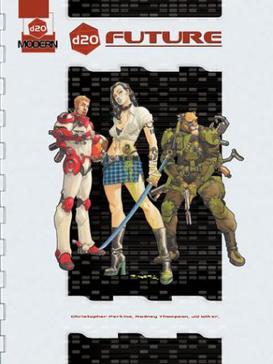
d20 Future is an accessory for the d20 Modern role-playing game written by Christopher Perkins, Rodney Thompson, and JD Wiker. It facilitates the playing of campaigns in the far future, using elements such as cybernetics, mecha, mutations, robotics, space travel, starships, and xenobiology. d20 Future is one of the most extensive of science-fiction d20 games and has its own SRD, which is a source for many other sci-fi d20 games.
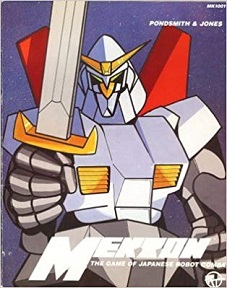
Mekton is a role-playing game which centers on the conventions of mecha anime and science fiction. It has seen several editions since its introduction in 1984, the most recent, Mekton Zeta being first published in 1994.
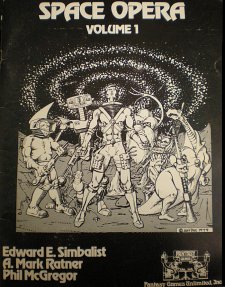
Space Opera is a science-fiction role-playing game created by Edward E. Simbalist, A. Mark Ratner, and Phil McGregor in 1980 for Fantasy Games Unlimited (FGU). While the game's system can be used to create any science fiction genre, Space Opera has a default setting focused on creating space opera themed adventures.

Empire of the Petal Throne is a fantasy role-playing game designed by M. A. R. Barker, based on his Tékumel fictional universe. It was self-published in 1974, then published by TSR, Inc. in 1975. It was one of the first tabletop role-playing games, along with Dungeons & Dragons, and was the first published RPG game setting. Over the subsequent thirty years, several new games were published based on the Tékumel setting, but to date none have met with commercial success. While published as fantasy, the game is sometimes classified as science fantasy or, debatably, as science fiction.
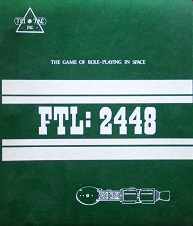
FTL:2448 is a science fiction role playing game published by Tri Tac Games in 1982 in which players use a faster-than-light (FTL) spaceship as a commercial enterprise, doing whatever it takes to buy enough fuel for the next voyage. This could involve trade, espionage, exploration, war or police work.

Space Master is a science fiction role-playing game produced by Iron Crown Enterprises (ICE) in 1985.
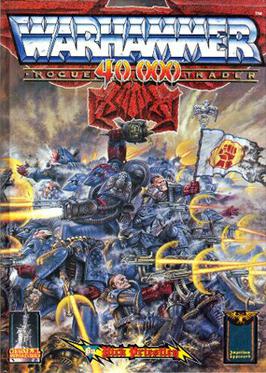
Warhammer 40,000: Rogue Trader is the first edition rule/source book for the Warhammer 40,000 miniature wargame by Games Workshop. The subtitle "Rogue Trader" was dropped in subsequent editions.

GURPS Traveller: Interstellar Wars is the first fourth edition book in the GURPS Traveller role-playing game series, by Steve Jackson Games, set early in the history of the Traveller universe.
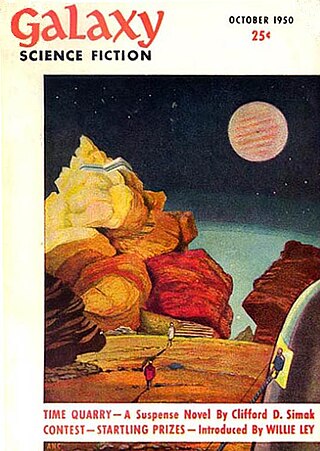
The planetary systems of stars other than the Sun and the Solar System are a staple element in many works of the science fiction genre.
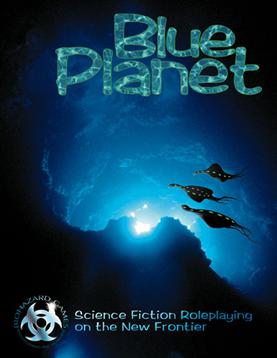
Blue Planet is an environmentalist science fiction role-playing game first published by Biohazard Games in 1997, set on the planet Poseidon.
David L. Pulver is a Canadian freelance writer and game designer, author of more than fifty role-playing game rulebooks and supplements, including the award-winning Transhuman Space.

Starships & Spacemen is a role-playing game published by Fantasy Games Unlimited in 1978.

Star Ace is a science fiction role-playing game published by Pacesetter Ltd in 1984 in which players take on the roles of rebel pilots fighting against an evil empire.

Invasion is a supplement published by Game Designers' Workshop (GDW) in 1988 for the science fiction tabletop role-playing game 2300 AD.


















